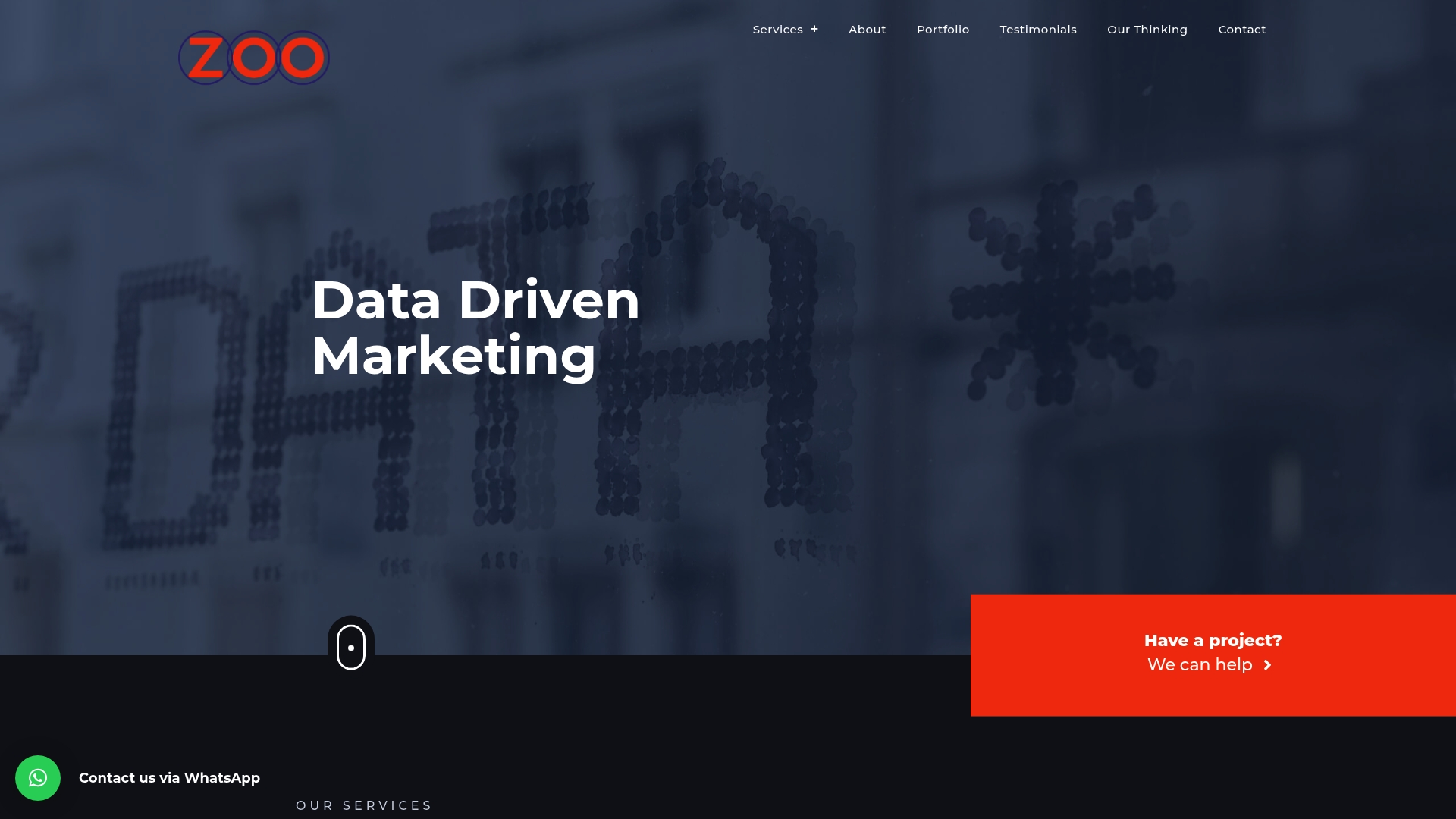Small businesses need more than a clever logo to stand out these days. People often think branding is a big-budget luxury only for corporate giants, but that could not be further from the truth. The right branding can actually boost your revenue by as much as 23 percent, giving even the smallest start-up a real fighting chance in a crowded market.
Table of Contents
- Why Branding Matters For Small Businesses
- Key Elements Of Effective Branding
- How Branding Drives Business Growth
- Simple Steps To Build A Strong Brand
Quick Summary
| Takeaway | Explanation |
|---|---|
| Establish a strong brand identity | Clearly define your brand’s values, voice, and unique characteristics to differentiate from competitors. |
| Maintain consistent brand messaging | Consistency builds trust; ensure your visuals and communication reflect your core values across all platforms. |
| Understand your target audience | Develop customer personas to tailor branding efforts to meet their needs and preferences effectively. |
| Leverage branding for competitive advantage | Effective branding can enhance perceived value, attract customers, and lead to higher profit margins. |
| Invest in an online presence | A solid digital footprint is crucial; focus on a professional website and engaging social media profiles. |
Why Branding Matters for Small Businesses
Small businesses operate in an increasingly competitive marketplace where standing out is no longer a luxury but a necessity. Branding goes far beyond a simple logo or visual identity. It represents the comprehensive narrative of your business, communicating your core values, unique selling proposition, and the fundamental promise you make to your customers.
The Strategic Advantage of Powerful Branding
Branding is a critical differentiator for small businesses seeking to establish credibility and connection with their target audience. Research from Harvard Business Review reveals that businesses with consistent and strategic branding can increase their revenue by up to 23% compared to those with inconsistent messaging.
The power of branding lies in its ability to create emotional resonance. When customers feel a genuine connection with a brand, they are more likely to become loyal advocates. This emotional investment transforms transactional relationships into long-term partnerships. Nielsen’s consumer research demonstrates that 59% of consumers prefer to buy from brands they know and trust, highlighting the critical role of brand perception.
Building Trust Through Consistent Brand Messaging
For small businesses, trust is the most valuable currency. A well-crafted brand strategy communicates professionalism, reliability, and authenticity. When your visual identity, communication style, and customer interactions consistently reflect your core values, you create a cohesive brand experience that resonates with potential customers.
Consider how our guide on building a digital presence can help you develop a comprehensive branding strategy. The right approach transforms your business from being just another option to becoming the preferred choice in your market.
Key elements of effective branding for small businesses include:
- Visual Consistency: Developing a recognizable logo, color palette, and design language
- Authentic Storytelling: Communicating your unique business journey and values
- Clear Value Proposition: Articulating what makes your business different and valuable
Branding is not a one-time project but an ongoing process of connection and communication. It requires continuous refinement, listening to customer feedback, and adapting to evolving market dynamics. Small businesses that invest time and resources into developing a strong, authentic brand create a sustainable competitive advantage that extends far beyond traditional marketing tactics.
By understanding and implementing strategic branding, small businesses can level the playing field, compete with larger competitors, and create meaningful connections that drive growth and customer loyalty.
Key Elements of Effective Branding
Creating a powerful brand requires strategic planning and a comprehensive understanding of your business’s core identity. Small businesses must focus on developing a robust brand framework that communicates their unique value proposition and connects authentically with their target audience.
Defining Your Brand Identity
Brand identity is more than a visual aesthetic. Research from West Virginia University’s Marketing Communications program highlights five critical components: brand values, brand voice, brand positioning, brand identity, and brand messaging. Each element works together to create a cohesive narrative that distinguishes your business from competitors.
Your brand values represent the fundamental beliefs driving your business. These are not merely statements but actionable principles that guide decision-making and demonstrate your commitment to specific ideals. For instance, a sustainable clothing brand might prioritize environmental responsibility and ethical manufacturing as core values.
Crafting a Consistent Brand Experience
According to the University of Nevada, Reno, consistency is paramount in building trust and credibility. This means maintaining uniform visual elements, tone, language, and logos across all platforms. Potential customers should recognize your brand whether they encounter it on social media, your website, or printed materials.
Consistent branding helps create a memorable impression. When every touchpoint reflects the same core message, you reinforce your brand’s reliability and professionalism. Learn more about integrating your marketing strategies to enhance your brand’s cohesiveness.
Key strategies for maintaining brand consistency include:
- Visual Uniformity: Develop and strictly adhere to a comprehensive brand style guide
- Tone of Voice: Create communication guidelines that reflect your brand’s personality
- Message Alignment: Ensure all content and communications support your core brand narrative
Below is a table summarising the key strategies mentioned for maintaining brand consistency across all touchpoints, helping to ensure a unified and professional image for your small business.
| Consistency Factor | Action Step |
|---|---|
| Visual Uniformity | Develop and adhere to a comprehensive style guide |
| Tone of Voice | Create communication guidelines reflecting personality |
| Message Alignment | Ensure all content supports the core brand narrative |
Understanding Your Target Audience
Research from the Rhode Island Small Business Development Center emphasizes that a strong brand must be purpose-driven and deeply aware of its target market. This requires extensive research and ongoing engagement to understand customer needs, preferences, and pain points.
Developing detailed customer personas helps businesses tailor their branding efforts. By understanding demographic information, behavioral patterns, and emotional drivers, you can craft messaging that resonates on a personal level. This approach transforms your brand from a generic business entity to a relatable, trustworthy partner.
Effective branding is an ongoing journey of connection, refinement, and adaptation. Small businesses that invest time in understanding and implementing these key elements will create a distinctive brand that attracts, engages, and retains customers in an increasingly competitive marketplace.
How Branding Drives Business Growth
Branding is not merely a marketing expense but a strategic investment that directly influences business growth and sustainability. Small businesses that understand and leverage their brand identity can create powerful mechanisms for attracting customers, building loyalty, and establishing a competitive edge in their market.

Creating Perceived Value and Competitive Differentiation
According to the Better Business Bureau, it takes approximately five to seven impressions before someone will remember your brand. This statistic underscores the critical importance of consistent and strategic brand communication. By developing a distinctive brand identity, small businesses can transform from commodity providers to unique solution creators.
Research from Florida Realtors reveals that effective branding allows businesses to command premium pricing by increasing perceived value. When customers associate your brand with quality, reliability, and unique benefits, they become willing to pay more for your products or services. This pricing power directly translates into improved profit margins and sustainable growth.

Building Customer Trust and Loyalty
Trust is the foundation of any successful business relationship. A well-crafted brand communicates professionalism, reliability, and authenticity. SCORE highlights that brand identity encompasses more than visual elements—it represents the complete experience customers can expect from your business.
Learn how to develop a comprehensive marketing strategy that integrates your brand’s core message across all customer touchpoints. By maintaining consistency in messaging, visual design, and customer interaction, you create a predictable and trustworthy brand experience.
Key growth strategies through branding include:
- Emotional Connection: Developing brand narratives that resonate with customer values
- Referral Generation: Creating memorable brand experiences that encourage word-of-mouth marketing
- Market Positioning: Establishing a unique space in customers’ minds
Expanding Market Reach and Opportunities
Strong branding acts as a powerful catalyst for business expansion. When your brand becomes recognizable and respected, it opens doors to new market segments, partnership opportunities, and potential investor interest. Small businesses with clear, compelling brand identities are more likely to attract collaborations and strategic opportunities.
Moreover, a robust brand serves as a strategic asset during business scaling. It provides a consistent framework for introducing new products, entering different markets, and adapting to changing customer needs. Your brand becomes a flexible yet stable platform for continuous innovation and growth.
Branding is a dynamic process that requires ongoing refinement and alignment with your business objectives. Small businesses that view branding as a strategic investment rather than a peripheral activity position themselves for long-term success, customer loyalty, and sustainable growth in an increasingly competitive marketplace.
Simple Steps to Build a Strong Brand
Building a strong brand requires strategic planning, creativity, and consistent execution. Small businesses must approach brand development as a comprehensive process that goes beyond superficial design elements and captures the essence of their unique value proposition.
Define Your Brand Foundation
According to Strathmore University Business School, a powerful brand is more than just a visual representation. It encompasses the entire company essence that influences customer perception and purchasing decisions. The first critical step is understanding and articulating your brand identity.
Start by developing clear mission and vision statements that communicate your business’s core purpose. These statements should answer fundamental questions: What problem does your business solve? What makes your approach unique? What values drive your organization? Explore our comprehensive guide on developing a strategic marketing approach to refine your brand’s foundational elements.
To help you quickly grasp the foundational steps for building a strong brand, here’s a table outlining the key components you need to define at the start of your branding journey.
| Component | Description |
|---|---|
| Purpose Statement | Clearly define why your business exists beyond making money |
| Core Values | Identify the principles that guide your business decisions |
| Unique Value Proposition | Articulate what sets you apart from competitors |
| Mission Statement | State your business’s core purpose and broad goals |
| Vision Statement | Describe your aspirational long-term goals |
Key components of brand foundation include:
- Purpose Statement: Clearly define why your business exists beyond making money
- Core Values: Identify the principles that guide your business decisions
- Unique Value Proposition: Articulate what sets you apart from competitors
Develop a Compelling Visual Identity
Research from the University of Cincinnati emphasizes that visual design is a powerful storytelling tool. Your visual identity should communicate your brand’s personality, values, and professionalism across all platforms.
Design elements to focus on include:
- Logo design that reflects your brand’s essence
- Color palette that evokes the right emotional response
- Typography that aligns with your brand personality
- Consistent visual language across all marketing materials
Build a Robust Online Presence
The Utah Startup State Initiative recommends reserving website URLs and social media channels as a critical early step in brand development. Your online presence serves as a digital storefront and primary communication channel with potential customers.
Strategic online branding involves:
- Creating a user-friendly, professionally designed website
- Developing consistent social media profiles
- Producing valuable, brand-aligned content
- Engaging authentically with your target audience
Successful brand building is an iterative process that requires continuous learning and adaptation. Small businesses must remain flexible, regularly gather customer feedback, and be willing to refine their brand strategy. By approaching branding as a dynamic, strategic effort, you create a strong foundation for long-term business growth and customer loyalty.
Remember that your brand is a living entity that evolves with your business. Consistent effort, genuine communication, and a clear understanding of your unique value will transform your brand from a mere concept into a powerful business asset.
Frequently Asked Questions
Why is branding important for small businesses?
Branding is essential for small businesses as it helps establish a unique identity, builds trust with customers, and differentiates from competitors. Strong branding can increase revenue and foster customer loyalty.
What key elements should be included in a brand strategy?
A brand strategy should include defining your brand identity, maintaining consistent brand messaging, understanding your target audience, and creating a compelling visual identity to communicate your values effectively.
How does branding influence customer trust and loyalty?
Effective branding communicates professionalism and authenticity, creating an emotional connection with customers. This trust fosters loyalty, encouraging repeat business and positive word-of-mouth referrals.
What are some simple steps to build a strong brand?
To build a strong brand, start by defining your brand foundation, developing a consistent visual identity, and establishing a robust online presence. Engaging with your target audience through authentic communication is also crucial.
Transform Your Brand Into a Powerful Growth Engine
Are you struggling to turn your small business into a brand that customers instantly trust and remember? This article has shown that a clear brand identity and consistent messaging are essential, yet many business owners feel overwhelmed by the digital demands and the need for professional visuals and outreach.

Now is the time to bridge the gap between learning and action. At Zoo Digital, you get more than advice. Our team specialises in data-driven marketing solutions that bring your brand’s value to life online. From custom web development and SEO to targeted ad campaigns and smart automations, we work to make your unique business stand out and grow. Take the next step toward building a brand customers can trust and recommend. Visit our digital experts today and unlock your brand’s full potential.

